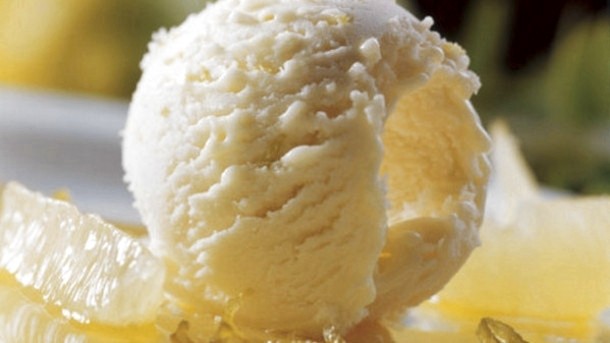China direct
Ice cream tastes changing as Chinese market thaws out

Yet this growth comes at a time when ice cream sales have been in decline, with retail volumes slipping by 1.6% per year from 2014-16.
According to Mintel research, however, the overall value of the market continues to rise as consumers trade up for premium flavours and formats, like “edible containers that taste good”, “customised flavours/shapes” and “innovative packaging”.
Better-for-you options are among the more popular premium features, the global market researcher found in a new study.
Just under 60% said they are willing to buy ice cream products that feature a “100% natural/no additive” claim, especially among 68% of soft-serve ice cream consumers, and 65% of consumers aged 30-39.
“Urban Chinese consumers are paying more attention to their health, while still looking for opportunities for indulgence, which should not be compromised,” said Cheryl Ni, Mintel’s food and drink analyst.
“Given the fact that more consumers today are eating ice cream as a snack or a dessert at home compared to previous years, family-size tubs or multipack offerings will have further opportunities.”
There is also scope for ice cream to be positioned as “mood food”, appealing in particular to a younger generation of consumer that is willing to pay a premium price for it, she added.
While traditional retailers have been seeing a steady decline in sales, online channels have experienced significant growth.
Sales at online brand stores, such as official shopfronts at e-commerce giant Tmall, increased from 3% to 16% between 2012 and 2017. Mintel's data indicates that this growth is driven by high earners, who are more likely to be fans of online channels.
“Shopping for ice cream products from online retailers is usually more expensive given the cost of cold-chain delivery. However, we are seeing a growing number of imported ice cream brands available in online stores, providing more premium choices for consumers with a higher spending power,” said Ni.
More Chinese consumers in bigger cities claim to eat packaged ice cream as a snack during their leisure time, especially those in Shanghai.
Shanghaiers also show more interest in eating in ice cream parlours, dessert shops and coffee shops.
“The shift in consumption occasions redefines the ice cream market which is no longer an alternative to a cooling drink, but an indulgent treat that can bring a sense of enjoyment and happiness,” said Ni.
“Consumers in tier one cities prefer healthy versions of ice cream, but they don’t want to compromise on enjoyment, and this is why manufacturers should optimise recipes to achieve a balance of both.”
More from China…
China publishes ‘colouring foods’ standard
Chinese officials have published a new standard to provide regulatory certainty for the definition of “colouring foods”.
Standard “T/CNFIA 101-2017”, which will be formally implemented next January 1, offers definitive advice for products with colour ingredients that are recognised as natural and edible.
“It eases the life of manufacturers in replacing additive colours with clean-label solutions and meeting growing consumer demands for more naturalness,” said Victor Foo, general manager of GNT Singapore, one of the natural colour manufacturers that will stand to benefit from the standard.
According to GNT data, 86% of Chinese consumers believe that natural food should have no additives.
“It is very clear what consumers in China want and expect, and this new group standard provides manufacturers with the opportunity to delight them,” Foo added.
The standard has strict criteria for colouring foods, which can only be produced from natural and edible raw materials, such as fruits, vegetables, plants and algae, and extracted only through physical processes. The isolation of pigments through organic solvent extraction is not permitted.
A key requirement is that the characteristic properties of the raw materials, such as flavour, taste, nutritive and colouring constituents, are retained.
If compliant, colouring foods can simply be declared on an end-product’s label—for example: “Colouring Food (Concentrate of Carrot)”.
The China National Food Industry Association, which has worked on the group standard since 2016, did so in consultation with food industry stakeholders.
“It is consistent with key principles of the EUgGuidance note on the classification of food extracts with colouring properties, thus providing a step forward in achieving globally compliant colour solutions,” GNT said.
Yili named official dairy for 2022 Winter Olympics
Yili has been named the dairy partner for the Beijing 2022 Olympics, making it the only food company to have supplied both summer and winter Games in China’s capital.
Asia’s biggest dairy was also named “Official Dairy Products Supplier” for the 2008 Olympics.
“Yili has a history partnering the Olympic Games and Paralympics" said Pang Gang, president of the privately owned Chinese dairy.
“We will commit to promote the development of Winter sports and advocate a healthy lifestyle for all.”
The announcement of Yili’s participation as part of Beijing 2022’s Commercial Programme follows the naming of Bank of China and Air China as Official Commercial Banking Partner and Official Passenger Air Transportation Services Partner respectively. More partners are expected to be named in the next couple of months.
“We believe Yili will provide quality products and services as an official partner,” said Zhang Jiandong, vice-executive president of Beijing 2022.
The Inner Mongolia-based firm recently announced its first-half 2017 figures, achieving total revenues of RMB33.5bn (US$5.1bn) and growth of 11.3% over the same period last year. Net profit amounted to RMB3.4bn, following 4.5% growth.
The world’s eighth-biggest dairy “continues to lead the industry with its scale advantages in revenues, net profits as well as robust growth,” Yili said in a statement.






